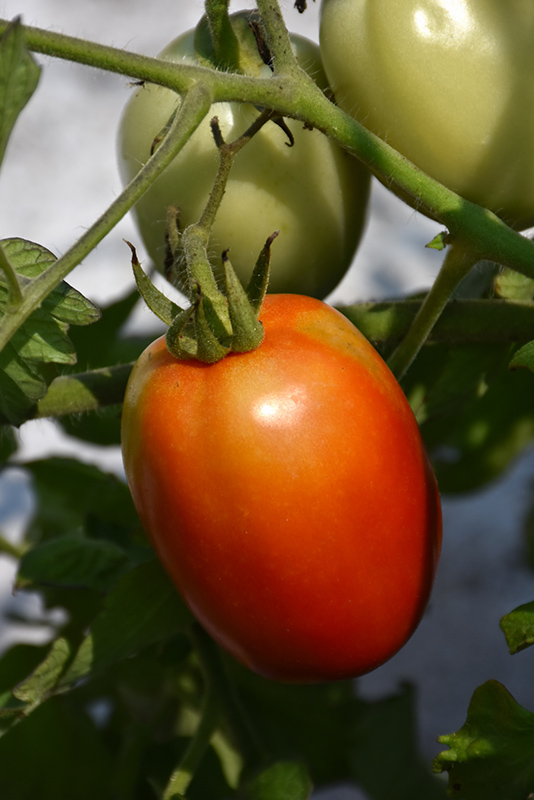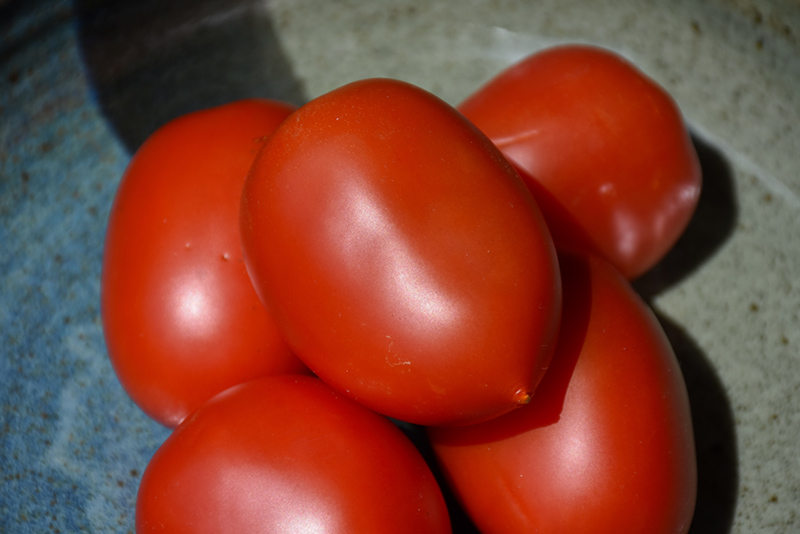>> Home
Height: 3 feet
Spacing: 3 feet
Sunlight:
![]()
Hardiness Zone: (annual)
Group/Class: Plum-Determinate
Description:
A well loved heirloom variety that is compact enough for patio containers and small gardens; produces beautiful red, oval fruit with meaty interiors and few seeds; ideal for canning, sauces, juice, soups and dehydrating; does not require staking
Edible Qualities
Roma Tomato is an annual vegetable plant that is typically grown for its edible qualities, although it does have ornamental merits as well. It produces red oval tomatoes (which are technically 'berries') with red flesh which are usually ready for picking from early summer to early fall. This is a determinate variety, which means it bears a full crop all at once. The tomatoes have a delicious taste and a firm texture.
The tomatoes are most often used in the following ways:
- Fresh Eating
- Eating When Cooked/Prepared
- Cooking
- Juice-Making
- Canning
Planting & Growing
Roma Tomato will grow to be about 3 feet tall at maturity, with a spread of 18 inches. When planted in rows, individual plants should be spaced approximately 3 feet apart. Because of its vigorous growth habit, it may require staking or supplemental support. This fast-growing vegetable plant is an annual, which means that it will grow for one season in your garden and then die after producing a crop.
This plant can be integrated into a landscape or flower garden by creative gardeners, but is usually grown in a designated vegetable garden. It should only be grown in full sunlight. It does best in average to evenly moist conditions, but will not tolerate standing water. It is not particular as to soil pH, but grows best in rich soils. It is somewhat tolerant of urban pollution. This is a selected variety of a species not originally from North America, and it is considered by many to be an heirloom variety.
Roma Tomato is a good choice for the vegetable garden, but it is also well-suited for use in outdoor pots and containers. With its upright habit of growth, it is best suited for use as a 'thriller' in the 'spiller-thriller-filler' container combination; plant it near the center of the pot, surrounded by smaller plants and those that spill over the edges. It is even sizeable enough that it can be grown alone in a suitable container. Note that when growing plants in outdoor containers and baskets, they may require more frequent waterings than they would in the yard or garden.

